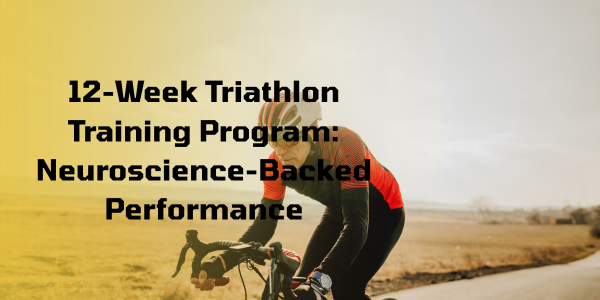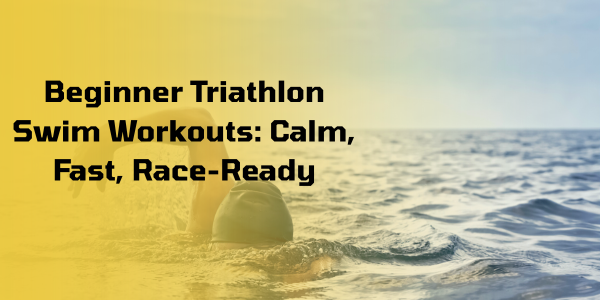Transition Mat Triathlon Guide: Build a Faster, Cleaner, Calmer T1/T2 System
Your mat isn’t just a rectangle—it’s your race-day dashboard. Set it right and you’ll flow from swim to bike to run with zero hesitation, clean feet, and no wasted motion. Let’s engineer that calm, even in chaos.
On This Page
- Why a transition mat matters more than you think
- Features that actually move your time
- Step-by-step setup (with pro cues)
- Blueprints by race distance
- Wet, cold, or blazing heat: weather-smart setups
- Towel vs mat vs DIY (timed drills)
- Etiquette & rules to keep you stress-free
- Care, cleaning & longevity
- The Streetlight 3-Zone System™
- FAQs
- Related playbooks & deep dives
Why a Transition Mat Matters (It’s More Than “Somewhere to Put Your Shoes”)
Think of your mat as a micro-stage: everything you need is exactly where your hand expects, your feet land on clean, grippy real estate, and your brain follows a script you rehearsed. The payoff? Fewer fumbles, fewer stumbles, and a calm switch that protects watts and cadence later when it matters.

Friction kills speed—on skin and in decisions. If chafe management is part of your pre-race ritual, keep your kit dialed with our anti-chafe solutions collection and make application a fixed step in your layout.
Transition Mat Features That Actually Matter
Size & Footprint
Spaces are tight. A footprint around 24" × 36" hits the sweet spot: room for a clean foot lane, shoes, and a small towel—without crowding your rack neighbor. Rounded corners reduce trip risk and help the mat “read” smaller to officials.
Material & Wet-Grip
Prioritize micro-textured TPE/EVA with hydrophobic coatings. Your feet will be sandy, wet, and vibrating with swim adrenaline. Wet-grip keeps you upright. If you want a deeper dive on skin friction (and why certain coatings feel faster), this explainer on the best anti-chafing stick for triathletes is a quick, practical read.
Visibility & Wayfinding
Mark “lanes” for feet, shoes, helmet, belt using contrast or minimalist gridlines. A flash of color (yellow strip near the toe) is a subconscious target—your feet will find it without thinking.
Packability & Hygiene
Fast-dry is non-negotiable. After the race, hose it, soap it, air it. Mildew-resistant materials keep your car (and spouse) happy. Hydration leaks? No problem if the mat drains—speaking of which, build your rack with spare bottles from our triathlon hydration gear.
| Feature | What to Look For | Why It Matters |
|---|---|---|
| Wet-Grip Texture | Micro-texture, hydrophobic coating | Prevents slips when sprinting barefoot post-swim |
| Drainage | Channels or perforations | Stops puddles; keeps feet & socks cleaner |
| Visual Lanes | Subtle grid / color blocking | Reduces decision load, faster hand placement |
| Packability | Rolls flat, light, dries quickly | Easier travel and less post-race funk |
Transition isn’t isolated—it's part of a whole-race system. For kit cohesion and mindset, this triathlon essentials blueprint for 2025 is our go-to primer.
How to Set Up Your Transition Mat (Step-by-Step)
Before You Start
Rack by the saddle, hang your bike with the front wheel facing out if the lane flows that direction, and center the mat parallel to the bike. Helmet always parked open, lenses in, straps out.
Build Your Lanes
- Feet lane: a narrow dry strip to stand on—quick swipe with a microfiber.
- T1 lane: bike shoes open (or running shoes if you ride in trainers), talc lightly dusted.
- Head lane: helmet upright; sunglasses nested; race belt underneath.
- T2 lane: run shoes pre-loosened (elastic laces), cap/visor stacked.
- Extras: a pea-sized anti-chafe stick, small sunscreen pump. Keep all items inside the mat edges.
Want to see how transition fits into the overall flow? This explainer on the triathlon order explained ties your layout to the exact moment your legs need it.
Blueprints by Race Distance
Sprint / Olympic: Minimalist & Fast
Remove choices. No socks unless you’re blister-prone. Shoes open and pointed the same direction. Helmet above shoes, belt under helmet. If you love checklists, here’s a razor-clean triathlon transition bag checklist that mirrors this layout.
70.3: Add Redundancy Without Clutter
Two gels on the run lane, spare elastic lace set under the cap, a small towel for salty hands. Want the bigger-picture packing logic? Study our transition bag guide before race week.
Iron-Distance: Calm in the Long Game
Duplicate essentials (tiny blister kit, sunscreen re-ups). Mark zones with subtle tape if the rack is crowded. When you’re planning the whole kit for the season, the 4-week sprint triathlon training plan we use includes specific transition reps to build autopilot.

Dial in the water piece too—skills reduce panic and save seconds. Start with beginner triathlon swim workouts that build sighting, drafting, and controlled breath.
Weather-Smart Setups
Rain: Grip First, Dry Feet Fast
Flip bike shoes upside down until you arrive; a hydrophobic mat keeps puddles off your toes. Quick microfiber swipe before stepping into the shoe. If you’re prone to rub on wet days, apply a thin film from our tri-tested anti-chafe playbook during setup.
Cold: Don’t Let Concrete Sap Warmth
A slightly thicker mat reduces conductive heat loss. Hand-warmers under helmet pads help dexterity. Build rack flow so you’re moving within 20 seconds.
Heat: Manage Sweat & Sun
White or reflective mat surface lowers heat gain. Frozen sponge in a bag at T2. Re-apply tiny sunscreen pump and go. Keep fluids topped; see our hydration lineup for heat-day essentials.
Towel vs Transition Mat vs DIY (Timed Drill Results)
We ran 10 × T1 + 10 × T2 reps per option. The trend is consistent: towels get soggy and slippery, DIY foam grips okay until saturated, and purpose-built mats hold advantage in speed and safety when wet.
| Option | Wet-Grip | Avg T1/T2 Time Delta | Setup Speed | Packability | Hygiene |
|---|---|---|---|---|---|
| Bath Towel | Low when wet | +8–12s | Fast | Bulky | Soggy; holds grit |
| DIY Foam | Medium (drops in rain) | +3–6s | Fast | Good | Rips over time |
| Purpose-Built Mat | High (textured, drains) | Baseline (fastest) | Fast | Excellent | Hose-off clean |
Transition Etiquette & Rules (Keep the Zen, Respect the Lane)
- Everything stays on your mat—no sprawl into the aisle.
- Rerack by the saddle only, wheels straight, number visible.
- Practice mounting/dismounting without blocking. Walk the entry/exit lanes before the start.
- Confirm local rules about boxes or buckets at bike racks (varies by race).
For full-kit thinking beyond the mat itself, bookmark our essential triathlon gear guide.
Care, Cleaning & Longevity
Quick Clean Routine
Rinse with fresh water post-race, mild soap, air-dry fully. Avoid fabric softeners; they nuke hydrophobic coatings. Roll, don’t sharp-fold, to preserve texture memory.
Seasonal Reset
Every 5–6 races: deeper wash, inspect edges, refresh lane markings if you use removable tape. Want a community-driven flow of micro-tips? Subscribe to the Streetlight training newsletter.
The Streetlight 3-Zone System™ (Entry → Execute → Exit)
We coach transitions like choreography. You land on the mat, step to the Entry lane, execute helmet/shoes with clean hands, then exit on rails. Build the habit weekly and anxiety shrinks.
Entry
Feet on the dry strip, quick wipe. Helmet grabs easy. If you’re leveling up your identity as an athlete, start here: becoming a Streetlight Athlete.
Execute
Shoes on, belt clipped while you walk the bike. Practicing short bricks? Fold these cues into the week with our coach-built sprint plan.
Exit
Eyes up, rack check, go. Keep friction quiet with your go-to stick and, when traveling light, stash AfterBurn Minis in the run belt.
FAQs: Transition Mat Triathlon
Do I really need a transition mat?
Strictly speaking, some athletes race without one—but the tradeoff is grit, puddles, and gear drift. A purpose-built mat standardizes your process and protects your feet.
What size and thickness works best?
About 24" × 36" with light cushioning and wet-grip. Big enough to stage, small enough to respect neighbors.
Are mats allowed under race rules?
Yes in most races if they fit your space and don’t impede others. Always check your athlete guide at packet pickup.
What about socks?
Short races: skip for speed unless you blister. Long races or rainy conditions: thin, quick-on socks staged toe-ready on the lane.
What else should live on the mat?
Helmet, glasses, race belt, shoes, mini towel, micro anti-chafe, sunscreen pump. Keep it all inside the edges. For advanced chafe management options, study our tri-specific anti-chafe guide and then loop back to execution.
Lock the System: One Stick, Two Transitions
Keep the machine quiet. A quick swipe at neck, underarms, seam lines, and hot-spot toes is the cheapest speed insurance on the course.
Training library growing fast? Keep up via the Streetlight Athletics coaching hub.



